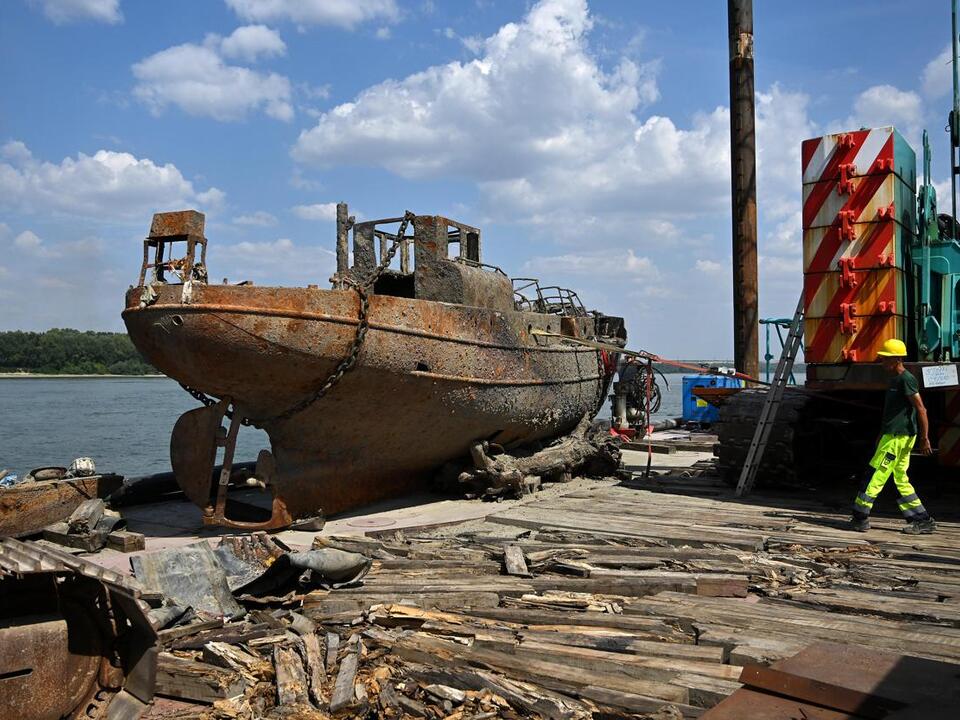Physical Address
304 North Cardinal St.
Dorchester Center, MA 02124
Physical Address
304 North Cardinal St.
Dorchester Center, MA 02124

A recent drought has unveiled a significant discovery in the River Danube, where several sunken Nazi ships have emerged. The drop in water levels has revealed not only these vessels but also remnants of wartime history, as reported by Reuters.
Among the finds is a series of German ships still outfitted with explosives, located near the Serbian town of Prahovo. Upstream, in Hungary’s Danube-Drava National Park, four additional ships dating from before 1950 have been uncovered. The revelation of these ships is part of a broader pattern, as frequent droughts have caused water levels in the river to plummet in recent years, continuously exposing vessels from the past.
The Danube, stretching 1,770 miles, is Europe’s second-longest river. Its fluctuating water levels pose challenges for navigation and threaten local drinking water supplies. According to Damir Vladic, the manager of the port of Prahovo, navigational safety is a major concern, stating, “Captains must be extremely cautious, and incidents such as grounding frequently occur. It only takes a slight deviation from the navigable route to cause problems.”
In 2022, a similar phenomenon occurred when numerous ships from Nazi Germany’s Black Sea fleet appeared near Prahovo due to record low water levels. The Copernicus program, overseen by the European Commission, identified severe water scarcity along the Danube, with portions of the river rendered unnavigable. The river recorded its lowest level of 1.3 feet in October 2018. Currently, the height stands at 3.8 feet near Budapest.
The history of these sunken vessels dates back to World War II. From 1941 to 1945, Nazi Germany and its allies occupied the Western Balkans, establishing strict control while battling local resistance. As the tide of war turned against them—particularly after their ill-fated invasion of the Soviet Union—German forces found themselves forced to retreat.
As they moved westward, many ships from the Black Sea fleet were scuttled in September 1944. This strategy aimed to obstruct the Red Army’s advance and prevent the vessels from being captured. Historian Velimir Miki Trailovic noted that, while attempting to slip through the Djerdap Gorge, the German forces realized they could not proceed and opted to sink their ships instead. An estimated 200 vessels were submerged during this retreat, including various types of boats, from transport ferries to torpedo boats.
For the past 80 years, these ships have largely remained undisturbed at the bottom of the Danube. However, the recent drought has allowed large portions of these vessels to break the water’s surface, with a German tugboat, the UJ-106, becoming visible near Prahovo.
In response to this situation, a salvage operation has been initiated. Funded by the European Investment Bank and the Western Balkans Investment Framework, the project has allocated nearly 30 million euros specifically for this effort. The removal of these historic ships began in August with the lifting of a minesweeper.
Local port workers believe that the minesweeper could be repaired and possibly relaunched after proper restoration. Yet, the operation poses several risks due to the presence of munitions still aboard these vessels. Trailovic pointed out the dangers involved, stating, “The ships are full of mines, shells, and unexploded ordnance that could cause major, catastrophic problems if they were to explode.”
Serbian officials have projected that it will take about a year and a half to safely remove all the identified vessels. Goran Vesic, Serbia’s minister of construction, transportation, and infrastructure, confirmed plans to recover 21 ships from the riverbed in the coming months. As the operation progresses, history unfolds in the waters of the Danube, revealing stories of the past while also addressing contemporary navigational and safety concerns.
Source: Reuters



